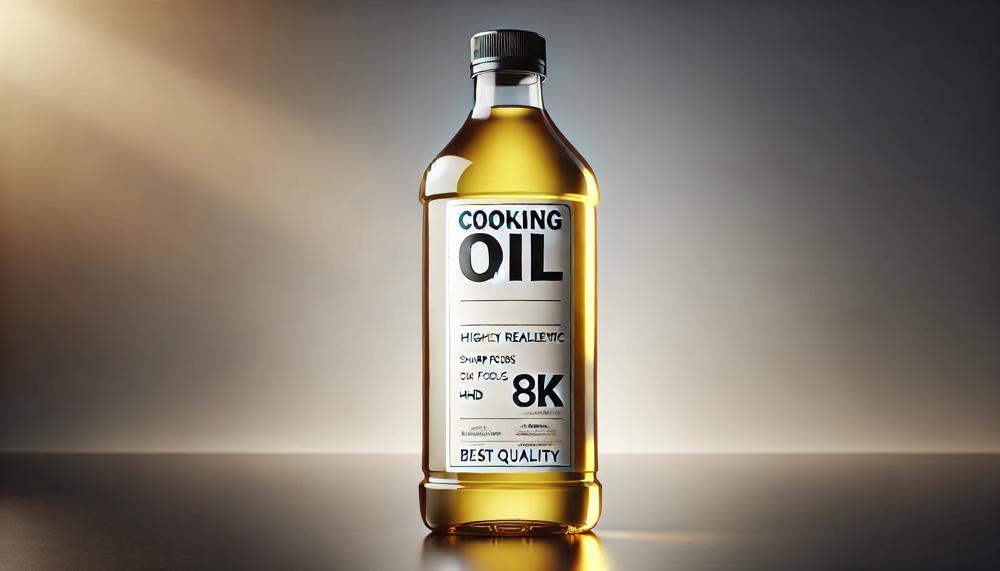Disposing of cooking oil properly is a small act with a big environmental impact. Pouring used oil down the sink or onto the ground can cause significant harm to the environment, clogging drain lines and polluting water sources. But don’t worry, there are easy and effective ways to handle your used cooking oil that are both eco-friendly and convenient.
Firstly, did you know that you can store and reuse cooking oil? By straining it through a coffee filter and keeping it in a sealed container, you can give your oil a second life. For small amounts, a grease keeper is a handy tool. It allows you to collect and solidify the oil, which can then be disposed of with your regular trash.
If you have larger quantities, recycling is the way to go. Many recycling centers convert used cooking oil into biodiesel fuel, a renewable energy source. Websites like Earth911.com make it easy to find nearby recycling centers with their interactive search feature.
Key Takeaways:
- Pouring cooking oil down the sink or on the ground is harmful and can cause clogs and pollution.
- Strain and store used oil for reuse.
- Use a grease keeper to solidify and dispose of small amounts of oil in the trash.
- Recycle large quantities of cooking oil to be transformed into biodiesel fuel.
- Use Earth911.com to find local recycling centers.
Understanding these simple steps ensures that your cooking oil disposal is responsible and environmentally friendly. Ready to make a positive change? Read on to discover all the details and become a kitchen eco-warrior.
Contents
Reuse Cooking Oil
Reusing cooking oil can be safe and effective if done properly. Here are the steps and tips to ensure your oil stays fresh and your food remains delicious:
- Filter the Oil: After cooking, let the oil cool to a safe temperature. Use a fine mesh strainer or a coffee filter to remove food particles and debris. This prevents the oil from breaking down and developing off-flavors.
- Storage: Store the filtered oil in a clean, airtight container. A glass jar or a designated oil storage container works well. Place the container in a cool, dark place, such as a pantry or a refrigerator, to slow down the degradation process.
- Monitor Quality: Check the oil before each use. Look for changes in color, consistency, and smell. If the oil has a rancid odor, is noticeably darker, or has a gummy texture, it’s time to dispose of it.
- Reuse Limit: Typically, oil can be reused up to three times. However, this depends on the type of food cooked and the cooking temperature. High-heat frying and heavily breaded foods reduce the oil’s lifespan.
Tips for Maintaining Oil Quality
- Avoid Overheating: Keep the oil at the proper cooking temperature. Overheating accelerates breakdown and produces harmful compounds.
- Use a Grease Keeper: A grease keeper with a built-in filter can help strain and store small amounts of used oil efficiently.
- Add Fresh Oil: Mixing a small amount of fresh oil with the reused oil can improve its quality and extend its usability.
- Recycling: If the oil is no longer suitable for cooking, consider recycling it at a designated center. Check Earth911 for local recycling options.
Signs Your Oil Needs to Be Discarded
| Sign | Description | Action |
| Rancid Smell | The oil emits a sour or off odor | Dispose of immediately |
| Dark Color | The oil has turned significantly darker | Dispose of immediately |
| Gummy Texture | The oil feels sticky or thick | Dispose of immediately |
| Smoke Point | Oil smokes at lower temperatures than usual | Dispose of immediately |
Pour Into Disposable Container
Answer: The best type of disposable container to use for disposing of cooking oil is a sturdy, non-leaking plastic or metal container with a tight-sealing lid. Ensure the container is heat-resistant if the oil is still warm. A used milk jug, an empty detergent bottle, or a metal coffee can work well for this purpose.
Proper Labelling and Disposal Instructions
- Label the Container: Clearly mark the container with “Used Cooking Oil” and add a note saying “Do Not Recycle with Household Waste” to avoid any confusion.
- Seal the Container: Make sure the container is tightly sealed to prevent spills or leaks.
Disposal Instructions:
- Local Recycling Centre: Take the container to a local recycling centre that accepts used cooking oil. You can find one near you using Earth911.com.
- Municipal Collection: Some municipalities have special collection days for household hazardous waste, including used cooking oil.
- Solid Waste Disposal: If recycling is not an option, ensure the container is sealed and place it in your regular trash bin.
Chill Until Solid
The short answer is: you can safely dispose of solidified cooking oil by storing it in a sealed container and discarding it with regular kitchen waste, or by taking it to a recycling center.
Here’s a step-by-step guide to ensure you’re doing it safely and responsibly:
- Strain the Oil: Use a coffee filter to strain any food particles from the cooled oil. This ensures it’s clean enough if you decide to reuse it or for recycling purposes.
- Store in a Sealed Container: Transfer the solidified oil into a sturdy, sealable container. Labelling it as “Used Cooking Oil” can help avoid confusion.
- Dispose with Regular Waste: If recycling isn’t an option, you can throw the sealed container in your regular kitchen waste. This prevents it from clogging your drains or harming the environment.
- Recycle When Possible: Eco-conscious individuals can take their used cooking oil to a local recycling center where it can be transformed into biodiesel fuel. Use tools like Earth911 to find a nearby collection center.
Pour Small Amounts Into Trash
To safely dispose of small amounts of cooking oil by pouring it into the trash, follow these steps:
| Step | Description | Details |
| 1 | Cool the Oil | Allow the oil to cool completely to avoid burns and spills. |
| 2 | Strain the Oil | Use a fine-mesh sieve or cheesecloth to remove food particles. |
| 3 | Container Preparation | Pour the oil into a sealable, non-recyclable container like a milk carton or plastic bottle. |
| 4 | Seal and Dispose | Securely seal the container and place it in your regular trash. |
Combine With Other Material
Cooking oil can be combined with various absorbent materials to facilitate its disposal, transforming it from a liquid into a solid waste that is easier to handle and less likely to cause environmental damage. The primary materials include sand, flour, sawdust, and pet litter. Here’s how each material works and its impact on the disposal process:
| Material | How It Works | Impact on Disposal Process |
| Sand | Mixing sand with cooking oil absorbs the liquid, creating a semi-solid mixture that can be more easily disposed of in regular trash. | Prevents oil from leaking, reduces mess, and minimizes environmental harm. Makes it safer for trash collection and disposal. |
| Flour | Flour can be mixed into the oil, causing it to thicken and solidify, making it easier to scoop and discard. | Provides a simple and accessible method to solidify oil, allowing for clean and convenient disposal in household waste. |
| Sawdust | Sawdust absorbs the oil effectively, turning it into a clump that can be easily thrown away. | Highly absorbent, reduces the risk of spills, and is environmentally friendly. Ideal for larger quantities of oil. |
| Pet Litter | Pet litter, particularly clumping varieties, absorbs oil quickly and forms solid clumps. | Makes the oil disposal process easy and sanitary, prevents leaks, and reduces odor. Convenient for household use. |

Combining cooking oil with these materials ensures that the disposal process is efficient and environmentally safe. It prevents the oil from causing plumbing issues or environmental damage and makes it manageable for waste management systems.
Purchase a Grease Disposal System
Purchasing a grease disposal system offers numerous benefits for properly disposing of cooking oil.
These systems not only ensure the safe and efficient handling of used cooking oil but also contribute significantly to the maintenance of both household and public plumbing systems. Here are the key advantages:
| Benefit | Description | Supporting Information |
| Prevents Pipe Blockages | Grease disposal systems prevent oil from solidifying in pipes, which can lead to severe blockages and costly repairs. | Learn more about grease traps |
| Environmental Protection | Proper disposal of grease ensures that it does not end up in water systems, preventing pollution and protecting wildlife. | EPA guidelines on urban runoff |
| Improves Waste Management | These systems allow for the recycling of used cooking oil, which can be converted into biodiesel or other useful products. | Recycling used cooking oil |
| Cost-Effective | Reduces the need for frequent plumbing services and mitigates the risk of expensive repairs caused by grease-related blockages. | Plumbing repair costs |
| Health and Safety | Minimizes the risk of kitchen fires caused by accumulated grease, ensuring a safer cooking environment. | Fire prevention tips |
| Pest Control | Proper disposal helps to avoid attracting pests such as rats and cockroaches that are drawn to improperly disposed grease. | Pest control information |
Investing in a grease disposal system is a wise choice for anyone handling large amounts of cooking oil regularly.
Recycle Cooking Oil
Recycling cooking oil significantly benefits the environment by reducing waste, lowering pollution, and promoting sustainable energy. Proper recycling can be achieved through several methods:
Environmental Benefits:
- Waste Reduction: Recycling cooking oil keeps it out of landfills, where it can cause soil and water contamination.
- Pollution Prevention: Proper disposal prevents oil from entering the water systems, where it can harm aquatic life.
- Sustainable Energy: Recycled cooking oil can be converted into biodiesel, a cleaner alternative to fossil fuels.
Proper Disposal Methods:
- Cooling and Containment: Let the used oil cool, then pour it into a sealed container such as an old plastic bottle or milk carton.
- Solidification: Solidify the oil by freezing it, making it easier to handle and dispose of.
- Recycling Centers: Take large quantities of oil to recycling centers or use doorstep pick-up services if available.
- Absorbent Materials: Mix the oil with absorbent materials like sand or sawdust to turn it into solid waste for simpler disposal.
Cooking Oil Disposal Don’ts
Many people unknowingly make mistakes when disposing of cooking oil, leading to environmental harm and household issues. Here are some common missteps and proper disposal methods:
| Common Mistakes | Proper Disposal Methods | Explanation |
| Pouring oil down the drain | Store in a sealed container | Oil can clog pipes, leading to plumbing issues. Use a sealed container, such as a mason jar, before disposal. |
| Throwing hot oil directly in the trash | Let it cool and solidify | Hot oil can cause burns and create a fire hazard. Let it cool, then solidify before disposal. |
| Mixing oil with regular waste | Use absorbent materials | Oil can leak and attract pests. Mix with absorbent materials like cat litter or paper towels before throwing away. |
| Not recycling | Take to recycling centers | Recycling used oil prevents environmental contamination. Find local recycling centers that accept cooking oil. |
| Ignoring local disposal regulations | Check local guidelines | Disposal rules vary. Follow local regulations to avoid fines and ensure safe disposal. |
Conclusion
Disposing of cooking oil responsibly is a small action with a significant environmental impact. Instead of pouring it down the sink, which can lead to clogged pipes and water pollution, there are several eco-friendly methods to manage used oil.
You can store and reuse cooking oil by straining it through a coffee filter and keeping it in a sealed container. This simple step can extend the oil’s life and reduce waste. For small amounts, a grease keeper is useful, allowing the oil to solidify for easy disposal with regular trash.
Recycling is the best option for larger quantities of used oil. Many recycling centers transform it into biodiesel, a sustainable energy source. Websites like Earth911.com help locate nearby recycling centers.
To ensure responsible disposal, never pour oil down the drain or on the ground. Instead, reuse it when possible, solidify small amounts for trash disposal, and recycle larger quantities.





